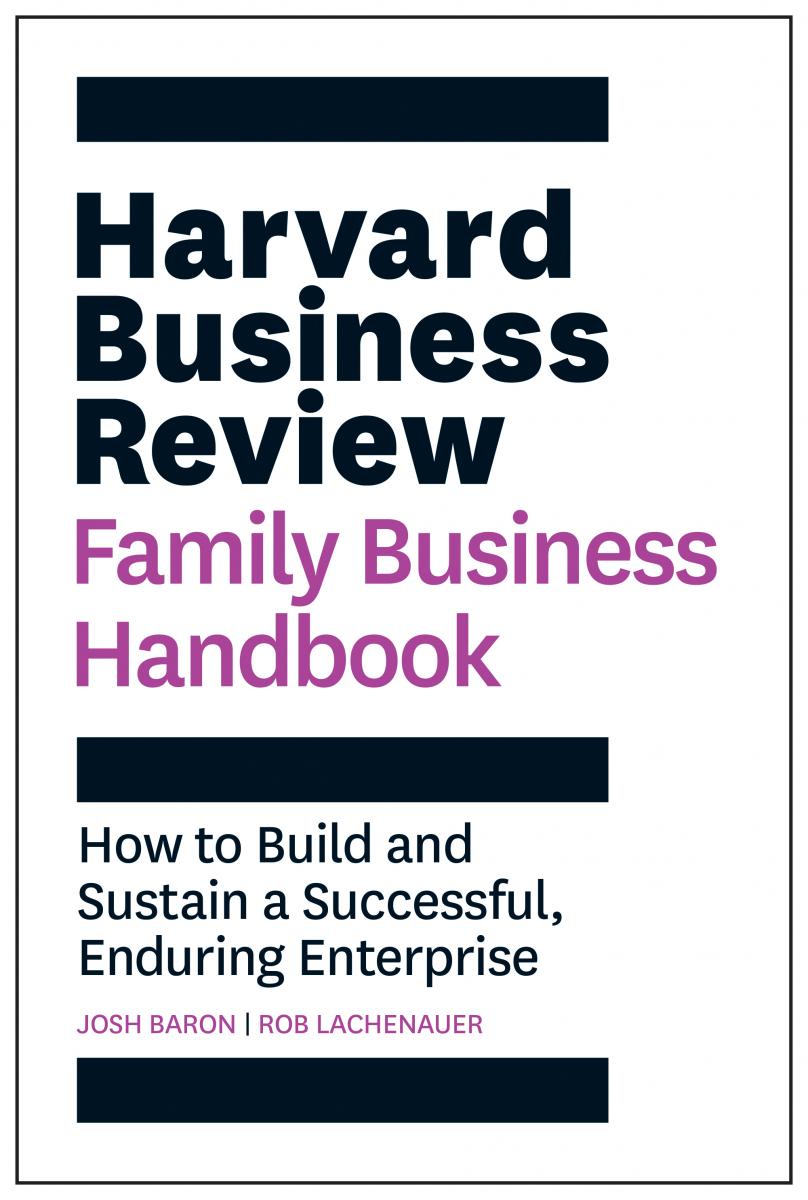Finding the Goldilocks zone of conflict in family business

Two brothers sharing ownership in a successful fourth-generation concrete business had a bitter falling-out triggered by an unlikely issue: a sailboat. The older sibling accused his younger brother of dipping into the company till to support his racing habit.
The younger brother countered that since he often entertained customers on the boat, he was following the same pattern the older brother had for years by having the company pay for expenses that had both a personal and a professional use. The younger man pointed to the ski house that had long been expensed to the business.
 This conflict, which revealed long-standing concerns over their roles and contributions to the company, had been simmering just below the surface. As their standoff continued, they would no longer let themselves be in the same room together, making it nearly impossible for major business decisions to be made and leaving employees caught in the middle. Ultimately, they sold the business at a deep discount and both men went to their graves without speaking another word to one another; their children grew up as strangers instead of cousins. And the family business was gone.
This conflict, which revealed long-standing concerns over their roles and contributions to the company, had been simmering just below the surface. As their standoff continued, they would no longer let themselves be in the same room together, making it nearly impossible for major business decisions to be made and leaving employees caught in the middle. Ultimately, they sold the business at a deep discount and both men went to their graves without speaking another word to one another; their children grew up as strangers instead of cousins. And the family business was gone.
Family owners wield the power to destroy their businesses. In fact, nothing can undermine a successful company faster than an unresolved conflict among its owners. No organisation is immune to narcissistic leaders or difficult relationships among employees. Most non-family businesses, however, have rules that govern behaviour for everyone from the bottom of the corporate ladder to the top.
But conflict is different in family businesses because the owners make the rules and therefore can also break them. Once a major battle gets started, it can be difficult to stop. Until the owners agree to stand down, conflicts will continue, with potentially devastating implications for the business and family.
Understandable fear about the potential impact of conflict causes many families to focus on maintaining harmony. But the quest for constant peace can backfire. Some disagreement is natural in a family business, and the ability to work through it is healthy. Avoiding clashes at all costs can have dire consequences, too. Conflict, it turns out, is a Goldilocks problem, where both too much and too little are unsustainable.

Get in the zone
For most people, conflict is uncomfortable. That can be especially true in families who have watched family arguments tear successful businesses to pieces. Consider the Ambani brothers in India, who bitterly fought for control of the family business, Reliance Communications, after their father died without a will. Or the Adidas founders, whose quarrel led the brothers to separate their German company into rivals Adidas and Puma. Then there is the Redstone family in the United States; the family’s battle for control of its media empire has been in the headlines for years.
For many families, the fear of conflict is so pervasive that they go to extraordinary lengths to avoid it. But less often recognised is that too little conflict can have an equally destructive impact. In fact, the effects of both too much and too little conflict on the family and the family business are almost identical. In both cases, the business can suffer from limited growth, poor decision-making, a loss of competitive advantage, and, in severe cases, the sale or split of the company. Similarly, at either extreme, families tend to break into factions and suffer poor relationships. The mechanisms are different, but the results are the same.
Conflict is a Goldilocks problem. Both ends of the spectrum are ultimately unsustainable, so the best place is in the middle. While Goldilocks may bring to mind the fairy tale, a better analogy may come from our solar system. The earth is in what astronomers refer to as a Goldilocks zone. Much closer to the sun, and the planet would be too hot to sustain life. Much farther, and the earth would be too cold. Though the causes differ, both extremes would make life uninhabitable on earth.

Conflict in a family business works much the same way. When the dynamic in a family is too hot, the level of shouting, screaming, and outwardly expressed anger makes it impossible for family to do the work of running a business. When the disagreement is too cold, there is quiet seething, a Pandora’s box of emotions waiting to be unleashed when opened. Between these two extremes is a healthy middle, where difficult issues can be raised, addressed, and resolved without the parties’ doing lasting damage to relationships or shared assets.
A family’s interests are rarely perfectly aligned. People have different objectives simply because they are in different places in the system. As a result, some conflict of interest is inevitable. Therefore, the priority is to manage that conflict, not simply tolerate or eliminate it.
Families on the too-much side of the spectrum struggle with how to reduce the intensity of the conflict so that constructive conversations can occur. Families on the too-little side must learn how to disagree outwardly to release the pressure that builds up internally.

What lies beneath
In our experience, the too-little side of the spectrum is much more common in families, even though it receives less attention from the media. Most families are conditioned not to fight with each other. Ask almost anyone what matters most to them, and they will tell you it is their family relationships, including the ability to spend time together to celebrate holidays, weddings, and other milestones. But the pressure to be the perfect family that never disagrees often ends up sowing the seeds of destruction down the road. Whenever families tell us that they get along perfectly, our ears perk up. Most often it is a fake harmony which reflects a lack of discussion on critical issues. Much like an iceberg, the surface seems pleasant enough, but the danger is not far below the surface.
What constitutes excessive conflict (as opposed to constructive disagreement) depends on personal interpretation and the family culture. Some families can more easily tolerate conflict than others, and the extent to which people will stoically put aside their personal interests to support the common cause also varies. But the Goldilocks zone shares some characteristics across all families.

Here’s a three-part quiz you can use to see if your family has found the zone:
1. Is there general satisfaction with the direction of the family enterprise? You may not be happy about every aspect, but you are unequivocally better together than apart.
2. Are decisions about critical issues being made? You need not address every single point of disagreement, but everyone would agree that there is no elephant in the room.
3. Are family relationships good enough to work and celebrate together? You don’t have to be best friends to own significant assets together. Instead, you have to be good business partners, which means you agree on the big issues and can enjoy each other’s company, at least most of the time.
If you answered yes to all three questions, you are likely to be in the Goldilocks zone. If not, you have work to do, either to lower the temperature or to raise it.
Adapted from The Harvard Business Review Family Business Handbook by Josh Baron and Rob Lachenauer (2021).






